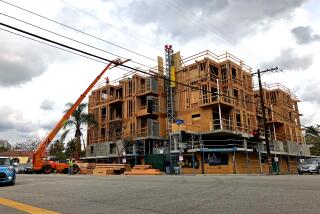Development Rules for Historic Zones Revised
- Share via
A plan to streamline the paperwork for minor development projects in the city’s three historic residential zones has been given preliminary approval by the City Council.
The proposed revisions to the City Code would ease regulations for property owners who want to make improvements.
The zones were established about 20 years ago “to protect and retain historical context of certain residential neighborhoods in the community,” said Joel W. Rosen, the city’s chief planner. Many homes in the historic zones were built just after World War I and have 70-year-old trees.
Current rules, Rosen said, require even minor additions in those zones to be formally reviewed by the Redevelopment Design Review Committee.
Under the revised code, minor construction or demolition, changes to landscaping and other alterations would not require formal review, as long as the changes meet the new guidelines.
Those guidelines, designed to preserve the traditional character of the neighborhood, include:
* Not destroying key historic features.
* Making projects compatible with the neighborhood.
* Retaining front porches with shapes, materials and colors typical of the style and period of the residence.
* Using brick, stucco, wood, cut stone or other materials to construct columns, typical of the style and period of the residence.
* Limiting frontyard fences and walls to 36 inches high.
The zones are: the College Park neighborhood; Whiting Avenue, between Ford and Malden avenues; and Valencia Drive, east of Harbor Boulevard.
The City Council will consider final approval tonight.
More to Read
Sign up for Essential California
The most important California stories and recommendations in your inbox every morning.
You may occasionally receive promotional content from the Los Angeles Times.






